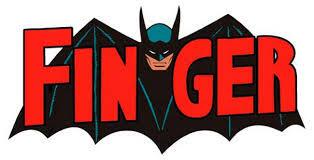 The easy part is making the jokes.
The easy part is making the jokes.
A favorite is the one that was the most obvious, like how Darren Daulton must be pleased that he was elected into the Phillies’ Wall of Fame now instead of a couple years down the road. Considering that the ex-catcher has claimed that certain folks will “ascend” into space at the conclusion of the Mayan calendar on Dec. 21, 2012 at precisely 11:11 a.m. Greenwich Mean Time, it’s good that Daulton got his due now.
His post-baseball life has also been rife with tabloid fodder, too. There have been DUI charges, he’s had his license suspended, been arrested for domestic abuse, and he spent two months in jail for contempt of court after refusing to abide by the terms of a legal agreement related to the divorce from his second wife.
And to think, he was thisclose to becoming the Phillies’ manager instead of Larry Bowa. Imagine how those teams could have turned out.
These days, though, Daulton appears to be past all of that. Reasonably fit for a 48-year old man who spent most of his adult life strapped into catcher’s gear and had nearly a dozen different knee surgeries, Daulton mane of hair that fell out of his batting helmet is beginning to thin out. To compensate, he has a neat beard outlining his jaw line and a tan that would put George Hamilton to shame.
His skin is like rich, luxurious Corinthian leather.
“I’ve been driving with the top down,” Daulton said about his deep, sun-enhanced hue.
There was plenty of talk about the past with Daulton on Tuesday afternoon at the Bank where he was officially welcomed into the club’s Wall of Fame. The ceremony in which a plaque bearing his likeness will be tacked to the wall in Ashburn Alley will take place on Aug. 6.
Chalk up Daulton’s election as one where intangibles like leadership and hard work trumped all.
“I never saw anyone work harder during a rehab,” team general partner David Montgomery recalled about the winter of 1986 and 1987 when Daulton worked out at the Vet in an attempt to return from one of those knee surgeries.
Essentially, that was the essence of Daulton… he always had to work and it never looked easy. Though he went to the All-Star Game three times and was the fourth catcher to lead the National League in RBIs during the 1992 season, effort was paramount. Injuries robbed him of some good years and certainly some bad choices were made along the way, but when it all came together it was pretty sweet.
Look at that 1993 season where Daulton was the straw that stirred the drink. That season where the Phillies won the NL East and got to the World Series to face the Blue Jays, Daulton finished seventh in the MVP voting despite the fact that a teammate finished second in the voting and he batted just .257 with 24 homers.
The number that slips through the cracks is that Daulton caught 146 games that season. Yeah, no wonder he was always having surgery. Daulton caught 141 games in 1992, too, which eventually led to him not being able to catch at all after the 1995 season.
“There was one thing I could always eliminate, and that was if I worked my tail off I wouldn't have to look back if I didn't make it and second-guess myself,” Daulton said. “After hurting my knee early in my career, that was a moment I had to make a decision on whether I was going to play major-league baseball or not. The things I felt I had control of I tried to accomplish that.”
Control when it came to baseball was the one thing Daulton had. However, like everything else that didn’t come easy, either. As Daulton explains, it took a slight by his manager and another soul-searching decision for him to take over the role he became most known for.
“I remember (manager Jim Fregosi) pinch-hitting for me in the ninth inning in Pittsburgh with Ricky Jordan [in 1991] and I got a little peeved,” Daulton said. “I went in and said ‘Fregos, I thought I was your everyday catcher,’ and he said, ‘Dutch, until you can prove to me you can hit left-handed pitching in the big-leagues, I'm going to pinch-hit for you late in the game.’ He said, ‘You've been here the longest, they’ve turned the club over — Schmitty is no longer here, Lefty’s gone, so you’re the guy who needs to step up and be the leader of the ballclub.’
“From that point on, I decided that’s my job, and he kind of reiterated we need a leader and I was obviously the guy running the show behind the plate, so that was probably the first night it dawned on me, if I was going to remain here, I was going to have to be the club leader ... and also learn to hit left-handed pitching.”
Daulton never really hit lefties all that well during his career (just .233), though by the end of his career there was no discernment in the statistics against either handed pitcher. Moreover, though he was no longer the catcher, Daulton was the leader the Florida Marlins needed when they made the mad dash to the World Series victory in 1997.
Simply put, prior to the current run by the franchise, Daulton may have been one of the most important players to ever wear the team’s uniform. For the time and the place there were not too many players who had an impact like Dutch. Of course, importance of a player belies simple things such as numbers on a page and in that regard Daulton is both simple and complex.
Kind of like the man himself.


























